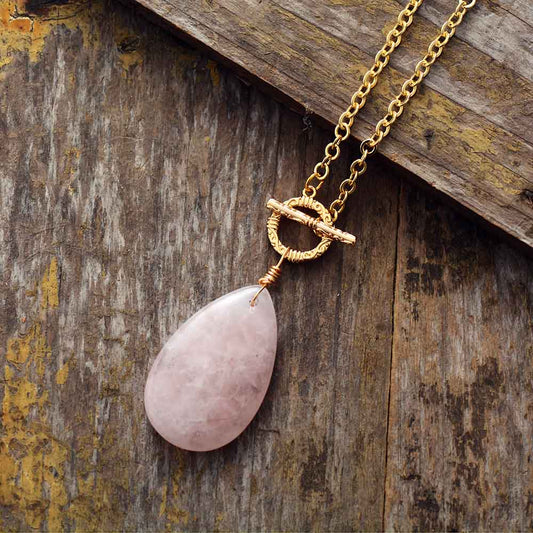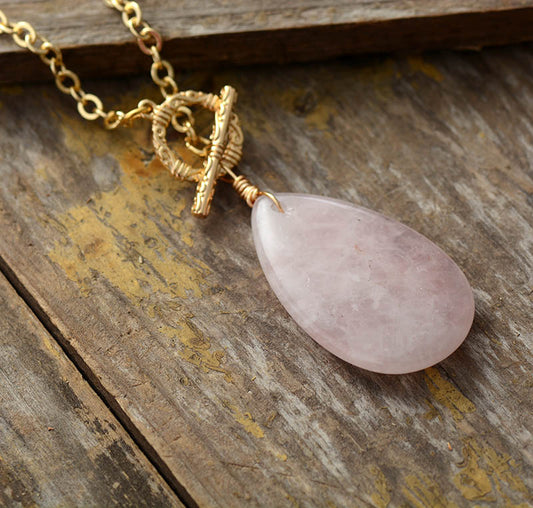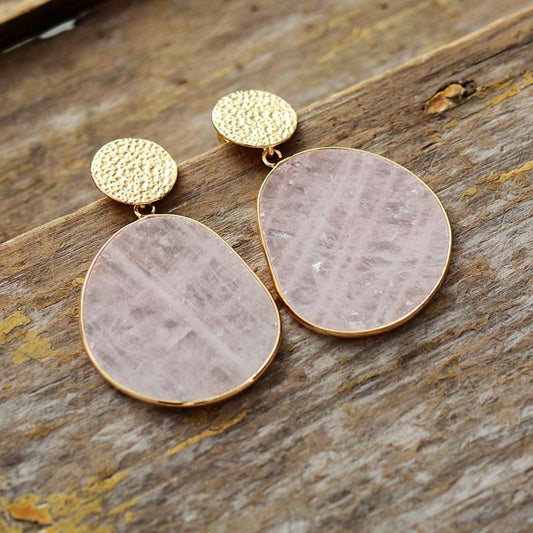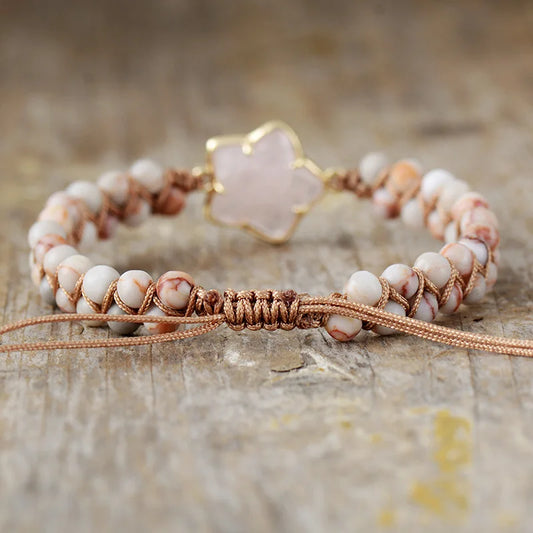Rose Quartz is a variety of quartz crystals. It is usually formed in the cores of granite pegmatites and has a hazy to translucent appearance and a colour that ranges from a light pale pink to a deep hot pink. It is due to trace amounts of titanium, iron, and manganese. The colour is very stable and will not fade with heat or direct sunlight.
Governed by Venus (Aphrodite), it is deeply associated with love in its purest form. It is a zodiac stone for Taurus and Libra.
Rose Quartz History & Legends
The myth suggests that Adonis, the god of plants and rebirth, found himself entangled in a love story with Aphrodite, the goddess of love and beauty. Aphrodite's obsession with Adonis enraged her past lover, Ares, the god of war, so much so that he sought every opportunity to exact revenge on Adonis for stealing her devotion away from him.
In the form of a wild boar in the forest, Ares set out to mortally wound his rival. His actions and Adonis' resulting screams caught the desperate attention of Aphrodite. While she was rushing down from the heaven to save him, she cut herself on a briar bush.
Aphrodite held a dying Adonis in her arms and their blood combined to form anemones in the ground and Rose Quartz gemstones after it stained white quartz crystals. The fusion of their blood led Zeus to show his compassion as he brought Adonis back to Aphrodite for six months a year. So, Rose Quartz became the Stone of Love and a central symbol of reconciliation and undying love.
Rose Quartz was also part of an Eros' story - the god of desire, love and attraction and known as Cupid to the Romans.
The myth goes that Eros brought the pink gemstone down from Olympus, the mountain of Gods, to spread love and romance around the mortal world, for it was the Love Stone itself. The romantic qualities of the beautiful pink hue to the stone were thought so powerful that they would inspire love in humankind.
The use of Rose Quartz can be dated back to ancient times. It was extensively part of the arts and crafts of the Assyrians as early as 7000 B.C. The Assyrians of Mesopotamia were the first people who have utilized and embodied rose quartz spiritual meaning in their practices and ceremonies.
For Romans and Egyptians, rose quartz stone meaning was beauty. It was being used in facial masks and cosmetic products as an anti-aging component. On the other hand, Americans connect with the crystal to achieve balance and peace. Rose quartz crystal meaning for them is akin to personal growth and well-being. In East Asia, it was used as a token of love and had been widely used and honoured in their carvings and lucky charms.
Rose Quartz Healing Properties
Rose Quartz encourages self-love and acceptance, relieves loneliness and opens the heart to be able to give and receive love. It is linked to the Heart Chakra and brings emotional, physical and spiritual healing. Awakening sensual creativity and tender fantasies are also well known rose quartz powers.
It carries a soft feminine energy of compassion and peace, tenderness and healing, nourishment and comfort. As it is connected to the Heart Chakra, it helps to dissolve emotional wounds, fears and resentments and circulates a Divine loving energy throughout the entire aura. Awaking the heart, Rose Quartz enhances the capacity to truly give and receive love from others.
Rose Quartz works well with childhood trauma, fear and anger. It helps to let go and deal with negative emotions to start the road to forgiveness and unconditional love.
It is a wonderful sleep crystal for adults and children, providing beautiful dreams as well as preventing nightmares or night terrors. It also helps children to not be afraid of the dark.
Awakening sensual creativity and tender fantasies are also well known Rose Quartz powers. As a stone of love, tenderness and sensuality, Rose Quartz is a powerful aphrodisiac, stimulating sensual imagination.















